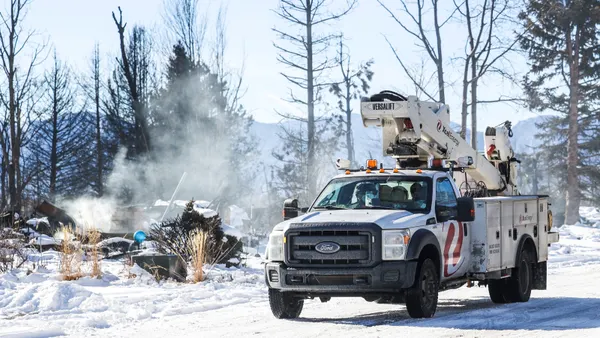Editor's Note: The following is a guest post from Laura Frantz, lead of utility customer experience and voice strategy at ICF.
During the COVID-19 pandemic, voice apps and smart speakers have played a key role in keeping people connected despite social distancing practices, stay-at-home orders and quarantines.
At a time when people are using smart speakers and voice recognition more than ever, utilities have an opportunity to connect with customers where they are, provide updates on their pandemic response and provide additional support to customers when they need it most.
Voice apps are already hard at work as part of the response to COVID-19. In April, Facebook donated 7,400 "Portal" smart speakers with screens to veterans and their caregivers, to facilitate in-home, real-time interactions and reduce feelings of isolation. Meanwhile in New York City, Northwell Health installed 4,000 Amazon Echo Shows in the rooms of COVID-19-positive patients to enable more frequent and independent connections with the outside world and internal care teams.
And stay-at-home orders have actually led to a significant bump in smart speaker use. According to a recent study from NPR and Edison Research, 35% of U.S. smart speaker owners have listened to more news and information through their smart speakers amid the pandemic, and 36% say they've increased their consumption of music and entertainment (with numbers skewing even higher among 18 to 34-year-olds).
Unique opportunities to connect with customers
Because more people are staying at home and increasingly using voice devices, utilities have a unique opportunity to connect with customers via voice app. They have the potential to provide real-time updates on the utility's pandemic response, as well as offer additional customer support as needed.
Within the context of COVID-19, voice apps have three key benefits:
Keeping customers informed about utility pandemic response
Voice apps provide another channel for customer engagement and education. They can deliver important and timely information to customers about changes to office location availability, answer simple questions around health and safety precautions utilities are employing during the pandemic, and more.
Helping customers stay on top of indoor air quality
As families spend more time at home, and as the indoor cooling season begins, homeowners can ask Alexa or Google to remind them to change their air filters to help keep indoor air quality high. They can also receive filter discount codes for utility marketplaces via voice app.
Helping customers reduce energy costs
As customers stay at home, their energy usage has the potential to increase. Utilities can offer and fulfill requests for energy efficiency kits via voice app to help offset usage increases and make up for potential gaps in energy efficiency program savings. Voice apps can also walk users through virtual audits when the homeowner does not desire an in-home audit, and provide personalized energy-saving tips to help further reduce a customer's bill.
Now more than ever, utilities should consider creating a branded voice app for in-home assistants to reach customers with information and reassurance about everyday changes. The process of creating a branded voice app is relatively quick and painless — and can provide utilities with a unique channel through which to establish a trusted, 100% opt-in, in-home utility presence.
By meeting customers where they are, and where they’re likely to remain for the foreseeable future, voice apps offer utilities a smart way to build customer relationships in these uncertain times.









